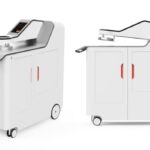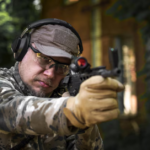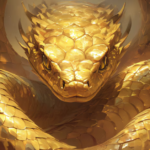Dorsalgia, a term derived from Latin meaning “back pain,” is a prevalent condition affecting millions globally. It encompasses pain experienced in the back, including the upper, middle, and lower regions. This condition can range from mild discomfort to severe pain that interferes with daily activities and overall quality of life. Understanding dorsalgia involves exploring its causes, symptoms, diagnostic methods, treatment options, and preventive strategies. This comprehensive guide provides an in-depth look into dorsalgia, aiming to equip readers with the knowledge needed to manage and alleviate back pain effectively.
1. Understanding Dorsalgia
1.1 Definition and Overview
Dorsalgia is a broad term that includes any pain originating from the back. The term can refer to pain in different sections of the spine—cervical (neck), thoracic (mid-back), and lumbar (lower back). The pain may be acute or chronic and can result from various underlying causes, ranging from minor muscular strain to severe spinal disorders.
1.2 Types of Dorsalgia
Understanding the specific type of dorsalgia is crucial for accurate diagnosis and treatment. Here are the primary types:
- Cervical Dorsalgia: This type affects the cervical spine or neck region. Causes include whiplash, cervical disc herniation, or cervical spondylosis.
- Thoracic Dorsalgia: Affecting the thoracic spine, this type is less common and is often associated with poor posture, muscular strain, or conditions like osteoporosis or scoliosis.
- Lumbar Dorsalgia: The most common type, affecting the lower back. It often results from degenerative disc disease, lumbar disc herniation, or spinal stenosis.
- Sacroiliac Dorsalgia: Involves pain in the sacroiliac joints at the base of the spine. It is often linked to inflammation or injury to these joints.
2. Causes of Dorsalgia
Dorsalgia can result from various factors, from simple muscle strains to complex spinal disorders. Here’s a detailed look at the common causes:
2.1 Muscular and Ligamentous Causes
- Muscle Strain: Muscle strain is a prevalent cause of dorsalgia, often due to lifting heavy objects, sudden movements, or poor posture. Overuse and repetitive stress can also lead to muscle strain.
- Ligament Sprain: Ligament sprains occur when ligaments, which connect bones, are overstretched or torn. This can result from trauma or repetitive stress.
2.2 Degenerative Conditions
- Degenerative Disc Disease (DDD): DDD occurs when intervertebral discs, which cushion the vertebrae, deteriorate. This degeneration can lead to pain, reduced flexibility, and conditions like herniated discs or spinal stenosis.
- Osteoarthritis: Osteoarthritis affects the spine, causing cartilage breakdown and bony spurs, leading to pain and reduced mobility.
2.3 Spinal Disorders
- Herniated Disc: A herniated disc happens when the inner gel-like core of a disc protrudes through its outer layer, pressing on nearby nerves and causing pain. It can occur in the cervical, thoracic, or lumbar regions.
- Spinal Stenosis: Spinal stenosis involves the narrowing of the spinal canal, which can compress the spinal cord or nerve roots, causing pain, numbness, or weakness.
- Spondylolisthesis: This condition involves one vertebra slipping over another, leading to pain and instability. It can be caused by congenital defects, degenerative changes, or trauma.
2.4 Inflammatory and Infectious Causes
- Ankylosing Spondylitis: An inflammatory arthritis that primarily affects the spine, causing chronic pain and stiffness. Over time, it can lead to spinal fusion and loss of flexibility.
- Spinal Infections: Infections like osteomyelitis (infection of the vertebrae) or discitis (infection of the intervertebral discs) can cause severe pain and may require urgent treatment.
2.5 Traumatic Causes
- Fractures: Spinal fractures from trauma, such as falls or accidents, can range from mild compression fractures to severe, unstable fractures requiring surgery.
- Whiplash: Caused by a sudden back-and-forth movement of the neck, commonly in car accidents, whiplash can lead to pain, stiffness, and reduced range of motion.
2.6 Other Causes
- Fibromyalgia: A chronic pain syndrome causing widespread pain, including back pain. It often accompanies other symptoms like fatigue and sleep disturbances.
- Psychogenic Factors: Stress, anxiety, and depression can contribute to or exacerbate back pain. In some cases, the pain may be primarily psychogenic, without an identifiable physical cause.
3. Symptoms of Dorsalgia
Symptoms of dorsalgia can vary widely depending on the location and severity of the pain. Common symptoms include:
- Pain: Pain can be dull, aching, or sharp and may be localized or radiate to other areas, such as the shoulders, arms, or legs.
- Stiffness: Stiffness in the back, especially in the morning or after prolonged inactivity, is a common symptom.
- Limited Range of Motion: Pain and stiffness can restrict the range of motion in the spine, making bending, twisting, or performing daily activities difficult.
- Muscle Spasms: Muscle spasms or tightness in the back can result from strain, injury, or inflammation.
- Numbness or Tingling: Nerve compression from conditions like herniated discs or spinal stenosis may cause numbness, tingling, or weakness in the extremities.
- Radiating Pain: Pain radiating from the back to other areas, such as the buttocks or legs, is common in conditions like lumbar disc herniation.
4. Diagnosing Dorsalgia
Accurate diagnosis of dorsalgia is crucial for effective treatment. The diagnostic process typically involves patient history, physical examination, and diagnostic imaging.
4.1 Patient History and Physical Examination
- Medical History: A thorough medical history helps identify underlying conditions or risk factors contributing to dorsalgia.
- Symptom Assessment: The healthcare provider assesses the nature, location, duration, and severity of the pain, along with any associated symptoms.
- Physical Examination: This includes palpation of the back for tenderness, muscle spasms, or deformities. Range of motion, reflexes, and strength testing may also be performed.
4.2 Diagnostic Imaging
- X-rays: X-rays can reveal fractures, deformities, or degenerative changes like osteoarthritis or spondylosis.
- Magnetic Resonance Imaging (MRI): MRI provides detailed images of soft tissues, including intervertebral discs, spinal cord, and nerves, and is useful for diagnosing conditions like herniated discs or spinal stenosis.
- Computed Tomography (CT) Scan: CT scans offer detailed cross-sectional images of the spine, helping identify fractures, tumors, or other abnormalities.
- Electromyography (EMG) and Nerve Conduction Studies: These tests assess nerve function and detect nerve compression or damage.
5. Treatment Options for Dorsalgia
Treatment for dorsalgia varies based on the underlying cause, severity, and duration of the pain. Treatment options are categorized into non-surgical and surgical approaches.
5.1 Non-Surgical Treatments
- Medications
- Analgesics: Over-the-counter pain relievers like acetaminophen can help manage mild to moderate pain.
- Nonsteroidal Anti-Inflammatory Drugs (NSAIDs): NSAIDs, such as ibuprofen or naproxen, reduce inflammation and provide pain relief.
- Muscle Relaxants: These may be prescribed to alleviate muscle spasms and stiffness.
- Corticosteroids: Oral or injectable corticosteroids may be used to reduce inflammation and swelling.
- Physical Therapy
- Exercise Therapy: Physical therapists design exercise programs to strengthen back muscles, improve flexibility, and promote proper posture.
- Manual Therapy: Techniques like spinal manipulation or mobilization can alleviate pain and improve function.
- Postural Training: Education on proper body mechanics and posture helps prevent and manage back pain.
- Lifestyle Modifications
- Ergonomics: Improving workstation ergonomics and adopting proper body mechanics can reduce back strain.
- Weight Management: Maintaining a healthy weight reduces stress on the spine and prevents exacerbation of dorsalgia.
- Activity Modification: Avoiding activities that worsen pain and incorporating regular physical activity can help manage dorsalgia.
- Alternative Therapies
- Acupuncture: Acupuncture may provide pain relief by stimulating specific body points.
- Chiropractic Care: Chiropractic adjustments can realign the spine and alleviate pain in some cases.
- Massage Therapy: Therapeutic massage helps relax tight muscles and improve circulation.
5.2 Surgical Treatments
Surgical intervention may be necessary for cases of dorsalgia unresponsive to conservative treatments or caused by severe structural abnormalities:
- Discectomy: Removal of a herniated disc or part of a disc pressing on a nerve root.
- Laminectomy: Removal of a portion of the vertebra (lamina) to relieve pressure on the spinal cord or nerve roots.
- Spinal Fusion: Joining two or more vertebrae to stabilize the spine and reduce pain.
- Artificial Disc Replacement: Implanting an artificial disc to replace a damaged intervertebral disc and maintain spinal mobility.
6. Preventive Strategies for Dorsalgia
Preventing dorsalgia involves adopting healthy lifestyle habits and making adjustments to reduce the risk of back pain. Key strategies include:
6.1 Exercise and Physical Activity
Regular exercise, including stretching, strengthening, and aerobic activities, helps maintain a healthy back and prevent dorsalgia. Focus on exercises targeting core muscles, improving flexibility, and promoting proper posture.
6.2 Ergonomic Adjustments
Make ergonomic adjustments to your workspace and daily activities to reduce back strain. Use supportive chairs, maintain proper posture, and incorporate frequent breaks during prolonged sitting.
6.3 Weight Management
Maintaining a healthy weight reduces strain on the spine and lowers the risk of developing dorsalgia. A balanced diet and regular physical activity are essential for weight management.
6.4 Proper Body Mechanics
Practice proper body mechanics when lifting, bending, or twisting to avoid excessive strain on the back. Use your legs to lift heavy objects and avoid twisting motions while lifting.
6.5 Stress Management
Manage stress through relaxation techniques, such as mindfulness, meditation, or yoga, to reduce muscle tension and prevent stress-related back pain.
7. Conclusion
Dorsalgia is a complex condition that can significantly impact an individual’s quality of life. Understanding the various causes, symptoms, and treatment options is crucial for effective management and prevention of back pain. By adopting healthy lifestyle habits, seeking appropriate medical care, and making ergonomic adjustments, individuals can reduce their risk of dorsalgia and improve their overall back health.
Whether you are experiencing acute or chronic back pain, it is essential to consult with a healthcare professional for a comprehensive evaluation and personalized treatment plan. With the right approach, many individuals can find relief from dorsalgia and enjoy a healthier, more active life.







